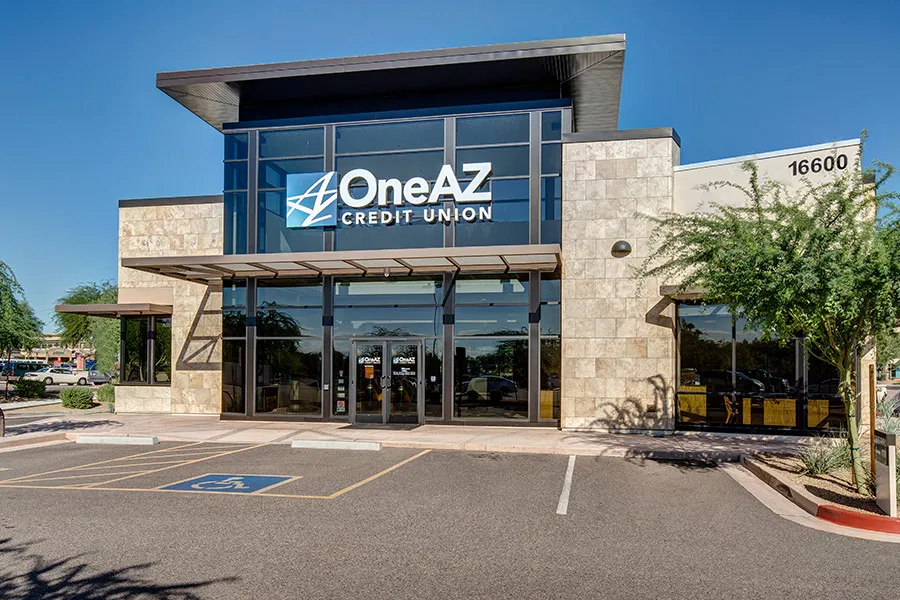What We'll Cover
- The major differences between banks and credit unions
- Where you can find better rates and fees
- How the technology compares
- Where you’ll get more quality service
Money touches every aspect of our lives, therefore deciding where to manage your everyday banking is a big decision.
The financial institution you choose, whether a bank or a credit union, will become part of your everyday life. Whether visiting a branch, heading to the ATM, or utilizing mobile banking, choosing the right financial institution matters.
But how do you decide which option is best for you?
Do you go with one of the national banks or do you choose the credit union in your neighborhood? Before making your decision, it’s important to first understand the difference between banks and credit unions.
For-Profit vs Not-for-profit
The simplest way to differentiate banks and credit unions is based on their profit status. Banks are for-profit, which means banks are either privately owned or publicly traded. Therefore, banks are required to generate profits for either their owners or shareholders.
Credit unions on the other hand are not-for-profit institutions and are owned by the members of the credit union. Whenever you open an account at a credit union, you become a member of the credit union.
Since credit unions don’t have to worry about generating profits for their owners or shareholders, credit unions can pass those savings back to their members.
Customers vs Members
Banks have customers and credit unions have members. Unlike banks where anyone can become a customer, credit unions are required by law to have membership requirements in order to become a member of the credit union.
The good news is membership requirements can be very broad. Some credit union membership requirements ask that you are a resident of the state where the credit union is located. Other credit unions may require you to be a student, an employee from a list of employers, or even just simply being a family member to a current credit union member.
The bottom line is the hurdle to becoming a member of a credit union is often as simple as becoming a customer at a bank. However, as a credit union member, you now share in ownership of your financial institution, you have voting rights within the credit union.
Service
One of the greatest benefits of being a member of a credit union over a bank boils down to service.
Remember, banks are focused on keeping investors happy whereas credit unions focus on keeping their members happy.
When you visit a credit union, members can expect a much more personalized approach than a larger national bank.
Credit unions are also committed to meeting the needs of their members and the community they serve.
For example, credit unions can focus on improving their communities by providing financial education for their members, supporting small businesses in the community, and even giving back to the community through charitable donations.
Fees and Rates
Typically, a credit union will have lower fees than a bank. Again, this goes back to the fact that banks must create a profit for their investors whereas credit unions can focus on members instead of shareholders.
For example, a large national bank may charge $5, $10, or even $25 per month as an account maintenance fee whereas a credit union like OneAZ Credit Union in Arizona can offer free checking without any monthly maintenance fees.
As far as rates go, credit unions on average will have higher deposit rates and lower rates on loans. This is a direct result of having the ability to pass profits back to the membership.
Locations and ATMs
One of the driving factors causing people to choose a large national bank over a credit union is for the convenience of both branches and ATMs.
In the past, national banks could outperform credit unions with having numerous branches and ATMs spread out everywhere.
However, as technology advances and fewer people are visiting branches, credit unions have found a way to compete with banks by creating alliances with ATM networks.
For example, OneAZ Credit Union in Arizona gives their members access to over 41,000 fee-free ATMs across the United States through those alliances.
Technology
In the past, credit unions were frequently behind in fintech, or financial technology. The large national banks had the ability to invest large amounts into online and mobile banking well before it was affordable for credit unions.
Today the line for technology between banks and credit unions no longer exists. Members of credit unions are enjoying the same online and mobile banking benefits you once only saw with banks.
Whether it’s depositing a check on your mobile device, setting travel notices, or aggregating all accounts into your online banking dashboard, many local credit unions now have the same, or even improved, technology capabilities as larger national banks.
Are Credit Unions Safe?
As you are probably aware, customers of banks are insured by the Federal Deposit Insurance Corporation (FDIC) for up to $250,000 per depositor, per insured bank, for each account.
Do credit unions offer that same protection for their members?
Yes!
Starting in 1970, Congress created the National Credit Union Administration (NCUA) to insure all deposits in credit union accounts. Just as with banks, all federal credit unions and most state credit unions are insured by the NCUA for up to $250,000 per depositor, per insured credit union, for each account.
You can check to see if your credit union is covered by visiting the NCUA website.
Which Should You Choose?
It comes down to asking yourself if you would rather be a member of a credit union or a customer of a bank.
Credit unions often have lower fees and better rates on both deposit accounts and loans. The technology for credit unions now keeps pace with the larger national banks and the convenience of finding an ATM is no longer the issue it once was for credit unions.
The bottom line is if you are looking for better customer service, lower fees, better rates, and a banking institution focused on the membership and community, then choosing a credit union over a bank is always the better choice.
| Credit Unions | Banks | |
| Structure | Not-for-profit | For-Profit |
|---|---|---|
| Loan Rates | Typically Lower Rates | Typically Higher Rates |
| Locations and ATMs | Fewer Physical Locations with Numerous ATMs | More Physical Locations and Numerous ATMs |
| Customer Service | Focus on Member Service, Personal Interactions and Community | Often Lacking in Customer Service and Personalized Engagement |
| Technology | Technology Improving and Catching Up with Banks | Usually a Leader in Technology |
| Insurance and Safety | FDIC Insured up to $250,000 via NCUA | FDIC Insured up to $250,000 via FDIC |
Key Takeaways
- Banks and credit unions are both federally insured up to $250,000 per depositor.
- Banks are owned by investors while credit unions are owned by the members of the credit unions, meaning credit unions can offer lower fees and rates since they’re not turning a profit for investors.
- Members of credit unions are enjoying the same online and mobile banking benefits you once only saw with banks.
- Credit union members often enjoy more personalized service since credit unions put members first and do not need to worry about investors.
Chris “Peach” Petrie is the founder of Money Peach. Money Peach partnered with OneAZ to provide free financial education to members across the state. To learn more about OneAZ’s partnership with Money Peach, click here.
APR = Annual Percentage Rate














